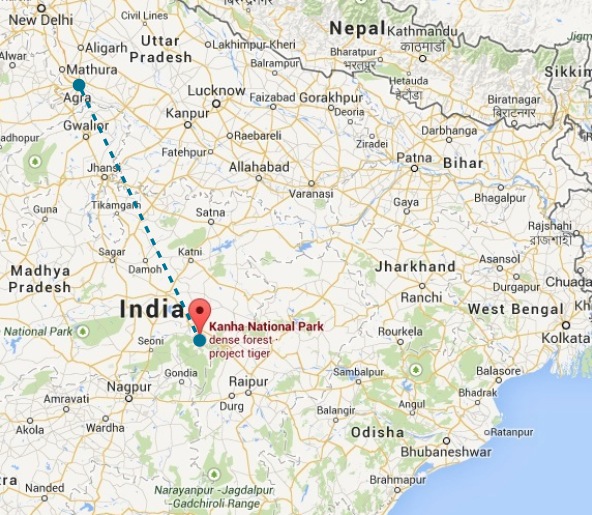
Jabalpur – Tuesday, Feb. 25, 2014
Our train finally rolled into the Jabalpur Junction train station at 12:30 p.m. It was five and a half hours late and we had already missed the last direct bus from Jabalpur to Kanha National Park.
Not wanting to spent the night in the industrial wasteland of Jabalpur, we decided to make our way to the bus station anyway to see if we could somehow still get to Kanha that day.
After relentlessly interrogating the man behind the bus station ticket counter we eventually determined it was possible to make it to Kanha National Park, but in an indirect manner that required two buses and only a ten minute transfer window.
With tickets in hand, we made our way into the chaos of the bus station. Our bus was a proper Indian affair with a flat rear tire, overstuffed with people and the driver blasting Hindi music through the PA system speakers.
As we left the bus station and weaved though the suburbs of Jabalpur, the bus conductor hung from the door frame, leaning out over the street shouting at every single pedestrian trying to get them aboard.
Thanks to the conductor’s endless attempts to get pedestrians off the side of the road and into the bus just to make a few extra rupees, it took us a good hour just to get out of Jabalpur.
The bus we were on was headed for a town called Mandla, where we had to switch rides and get on a bus bound for Kanha. Of course just to make things interesting our first bus was scheduled to arrive in Mandla at 3:20 p.m. and the bus to Kanha was set to depart Mandla at 3:30 p.m.
This meant any delays to our first bus and we would be stuck in Mandla for the night with no opportunity for a safari the following morning.
Thankfully it was fairly smooth sailing from Jabalpur to Mandla, but we still arrived 20 minutes late and had to sprint across the street to stop the bus to Kanha from leaving without us.
As we ran up an old Indian man who barely spoke English asked where we were going. I told him Kanha National park and he quickly made a phone call on his cell phone and handed me the phone.
A man who spoke perfect English answered and told me we should get off the bus in Mocha, where he would pick us up and take us to the park gate for Rs.150. It sounded alright, so I said we’d see him there.
The bus to Kanha was another three hours and we didn’t arrive until 6:30 in the evening. We met the man from the other end of the phone in Mocha and he drove us toward the park gate.
At this point we didn’t have a place to stay or safari passes for the following morning, so we had some scout work to do. Our first stop was Machan Complex, budget accommodation that was listed in the Lonely Planet book.
I hopped out of the car to take a look at a room, but on first inspection the place was way too basic and quite honestly creepy. There also wasn’t anyone else staying there, and we needed to meet people to spilt the cost of the jeep safari with.
At Kanha National Park safaris are charged per jeep load, not per person, so if you can find people to split the cost of the jeep with you save some serious rupees.
I went back to the car and told Tarynne that while the price of the Machan Complex was ideal, the place itself was a dump.
We then carried on to the second accommodation we can researched, Motel Chandan. It turned out our driver, Amit, worked for Motel Chandan and we were immediately impressed with the fact that even though he worked for the place he hadn’t tried to push it on us.
We took a quick tour of the grounds and were far more impressed with the place than Machan Complex. Of course the nicer digs came with a dramatically increased price tag, but since there were other people staying there and we could save massively on the safari price, it was the logical place to stay. Not to mention, the two managers Dinesh and Amit were some of the nicest and most helpful hoteliers we have stayed with in India.
We hadn’t even moved our bags into our room when we met the American couple we would be sharing the jeep with the following day. As chance would have it, we had already met them briefly one day earlier in Agra.
It was nice to see some familiar faces out in the middle of nowhere and we were extremely excited to share our safari experience with Tanveer and Kelly.
After settling into our room we headed to the hotel restaurant for some dinner and to get the lowdown on how the safaris at Kanha National Park work.
Kanha National Park – Wednesday Feb. 26, 2014
NOTE TO TRAVELERS: Basically, if you are an indian national or a foreigner with an Indian credit card you can book your safari in Kanha National Park in advance using the official state government website.
If you are a foreigner and don’t have an Indian credit card, things get a little bit more complicated as only 137 jeeps are allowed into the park at one time and the online spots always sellout weeks in advance.
Fortunately for us foreigners without an Indian credit card, 20 percent of the tickets are reserved for sale on the day of the safari on a first come first serve basis. Of course these tickets sellout fast, so it means you have to be awake and first in line at the ticket office.
For us this meant waking up at 4:45 in the morning and making the 100 meter walk down the road to the ticket office so we were first in line at 5 a.m. Thankfully we had a four person team with Tanveer and Kelly so we could take turns eating breakfast and waiting in line.
Since we were first in line, when the ticket office opened at 6 a.m. we were able to get passes for the premium “Kanha Zone,” which is deepest in the jungle and is supposed to produce the most tiger sightings.
While we opted for a morning Safari because there is a better chance of seeing a tiger, there are also afternoon safaris as well.
Unfortunately for us it had rained the night before, which usually means tigers stay back in the jungle and are difficult to see. Just our luck.
On the plus side, while we were waiting in line we found one more person to join us in our jeep so we could now split the cost five ways.
The gates to the park open at 6:30 a.m. and after chugging two cups of coffee each we climbed into the jeep with our fellow safariers and set out into the jungle.
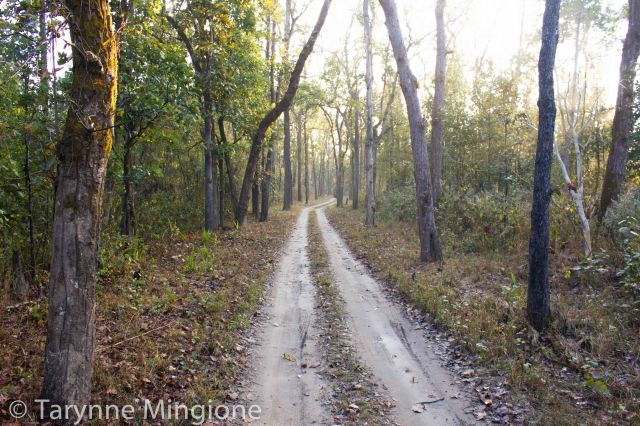

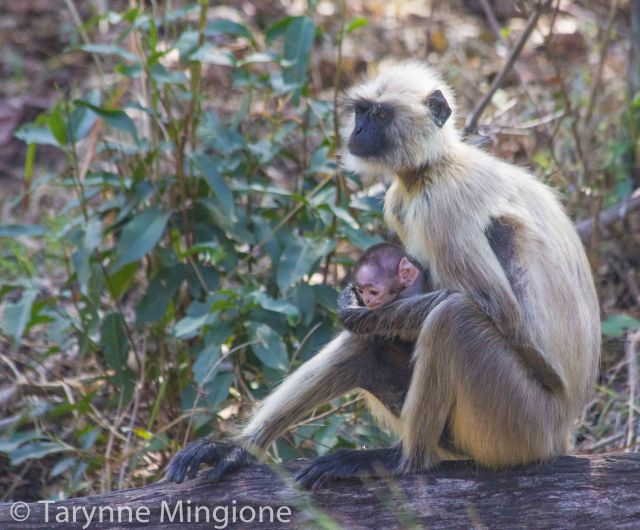
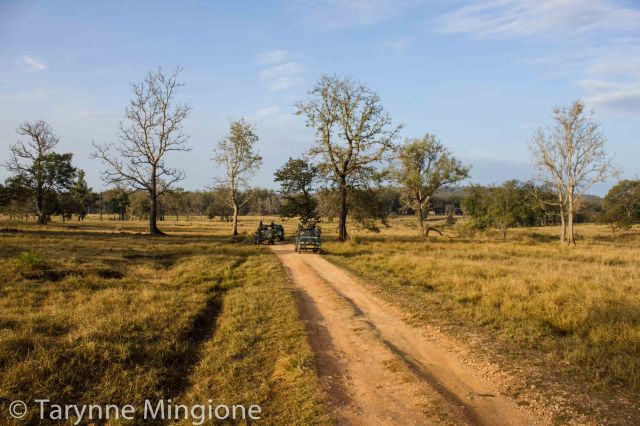
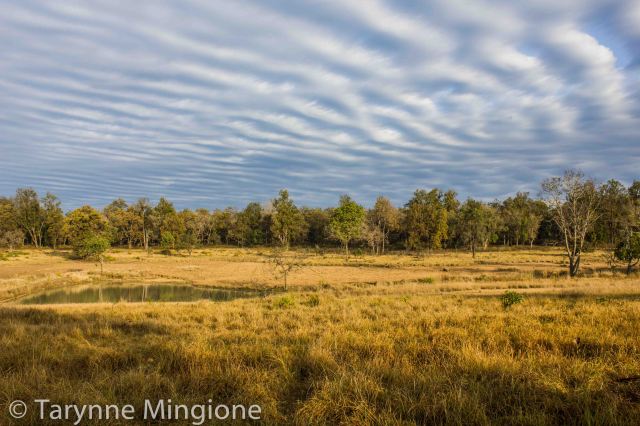
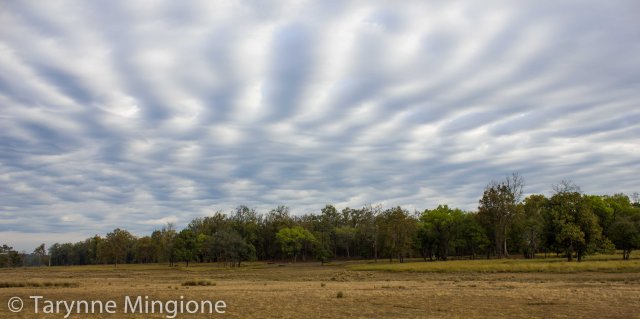
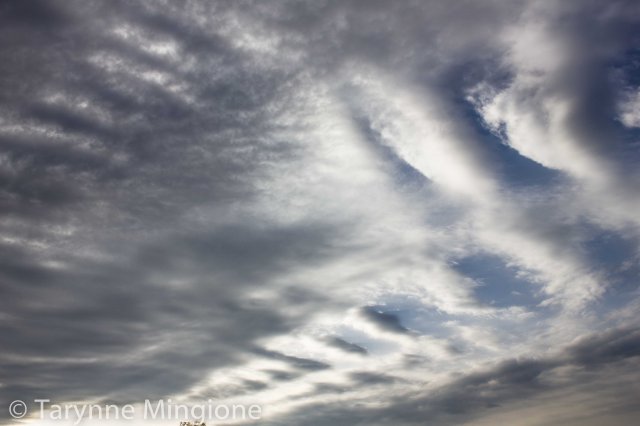
The first three hours of the safari were fairly uneventful. We didn’t see any tigers, but we did see a lot of interesting birds and we were able to enjoy the beautiful landscape in the early morning light.
About half way through the safari we stopped at the visitors center in the middle of the park to go to the bathroom, eat some snacks and drink some more coffee before heading back out into the wilderness.
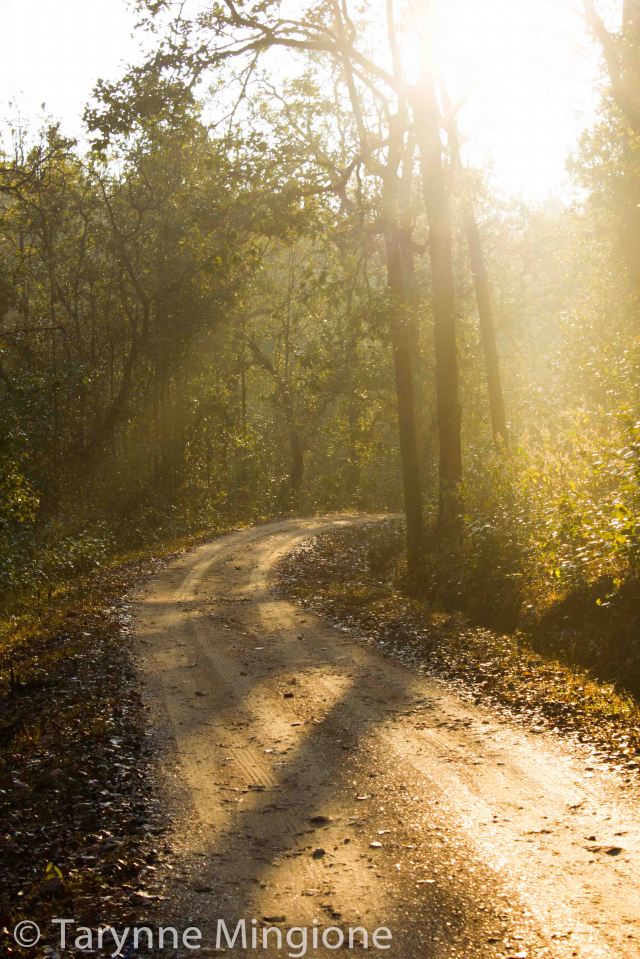
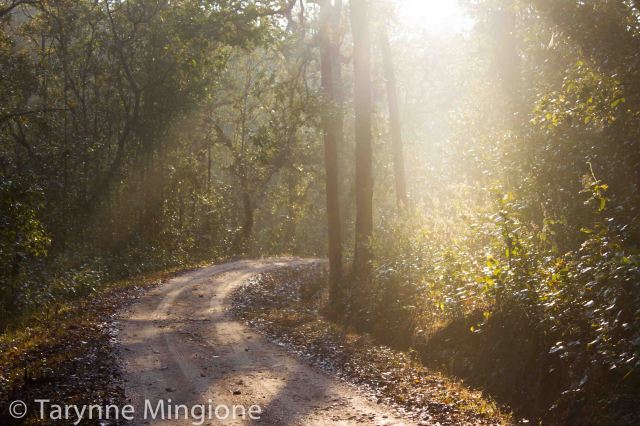

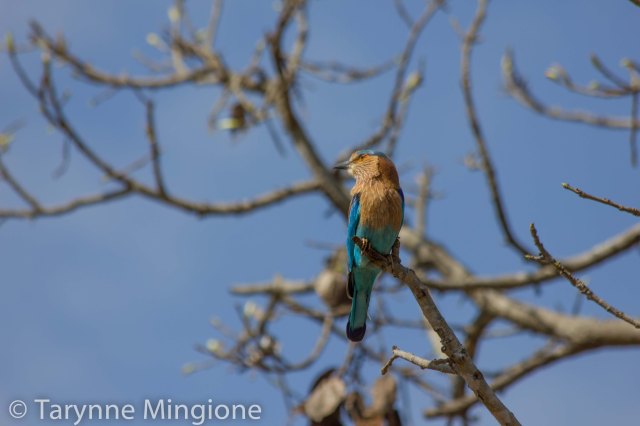
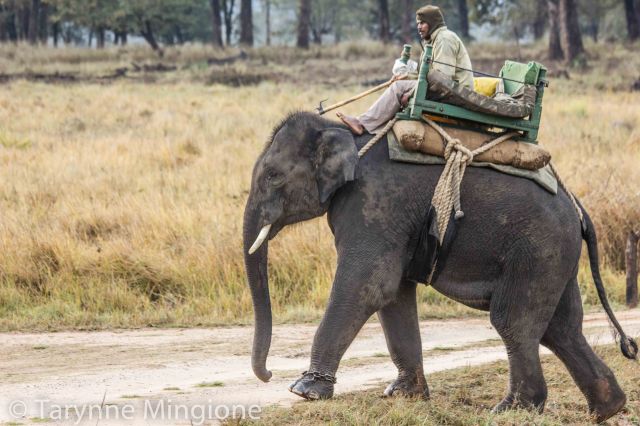
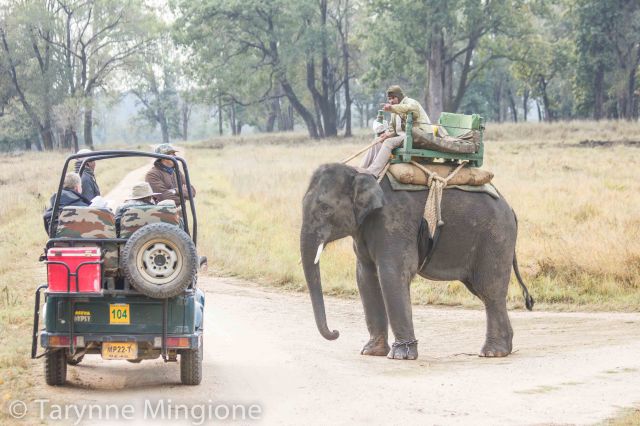

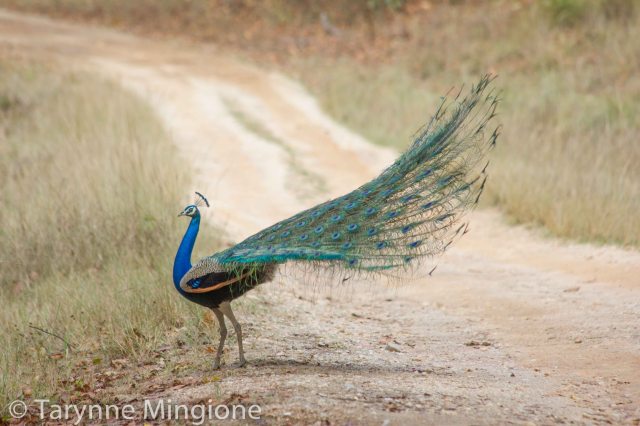
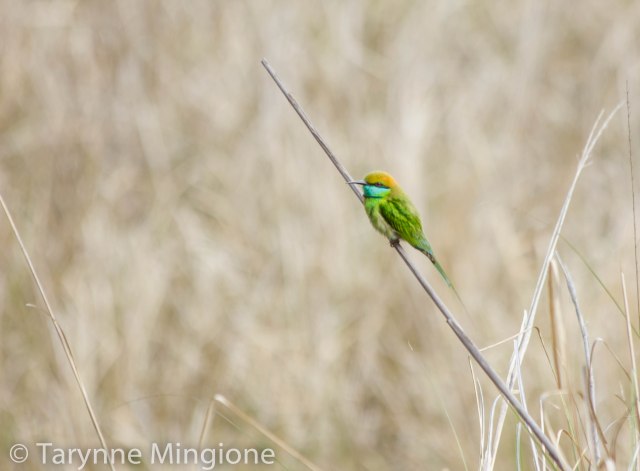
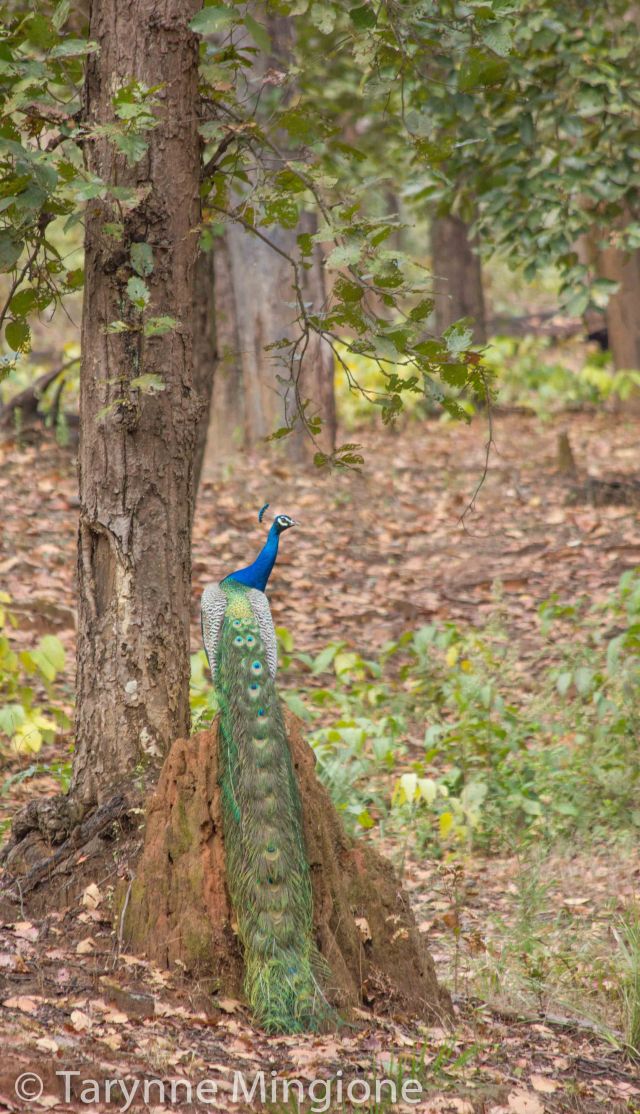
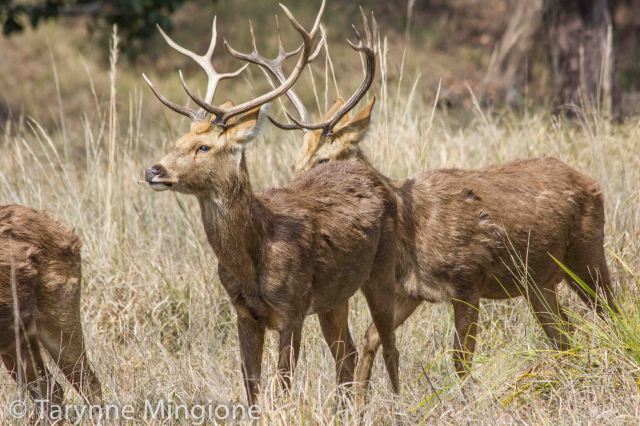
As luck would have it at 11 a.m. we returned to the gate of the park not having seen a tiger. We were extremely bummed out, but everyone said the chances were low because it had rained the night before.
Since we had all managed to find people to share a jeep with and save significant money, we all decided we would try one more time and go on another safari the following morning. We just had to hope it wouldn’t rain again.
Of course, just as we were heading to bed that night we saw massive bolts of lighting in the distance and twenty minutes later the heavens open.
The rain poured down in drenching sheets and the thunder cracked so loud overhead the roof of our bedroom shook. The storm lasted for about 45 minutes, leaving jungle around us soaked.
We eventually drifted off to sleep to the sound of wet leaves outside the window dripping on to one another.
Round Two – Feb. 27, 2014
Despite the fact a massive thunder storm had rolled through the region the night before we decided to try our chances at seeing a tiger one more time.
Once again we were up at 4:45 a.m. and in line at the ticket office promptly at 5 a.m. This time we were second in line, but still able to secure a premium “Kanha Zone” pass when the ticket office opened at 6 a.m.
With renewed spirit and a new, more enthusiastic guide, we climbed once again into our jeep and set out into the jungle.
This time we knew the odds were against us. It had rained again and during our conversations at dinner the night before we had learned the odds for seeing a tiger work out to about two sightings in every seven safaris.
We were only doing two safaris due to both budget and time constraints, so if we were going to see a tiger, this had to be it.
Somehow, only about 20 minutes into the safari our prayers were answered.
Our jeep rumbled around a corner and burst out of the thick jungle foliage into a clearing. Up ahead, just to the left hand side we saw a tiger sitting majestically under a tree.


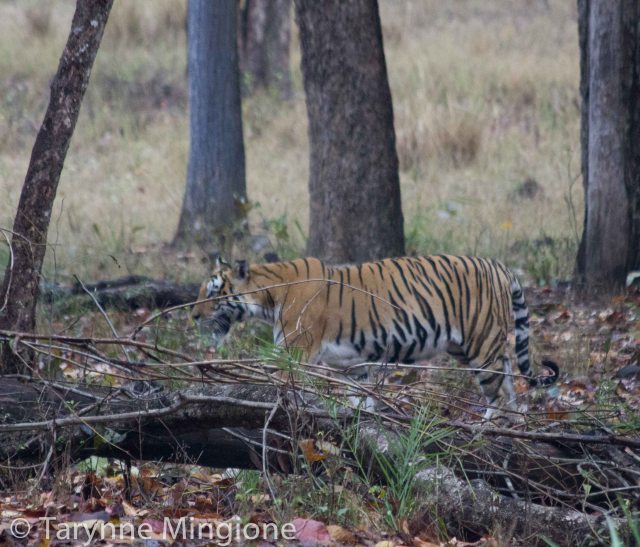
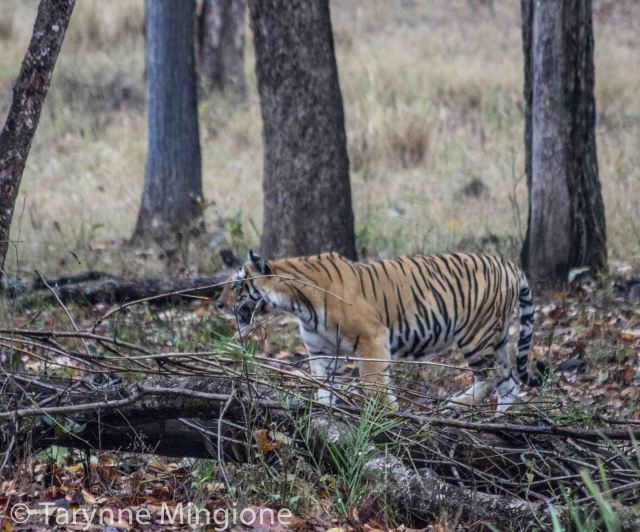
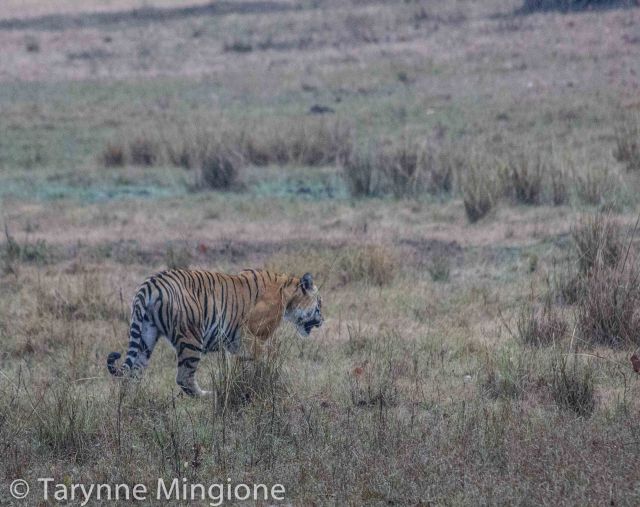
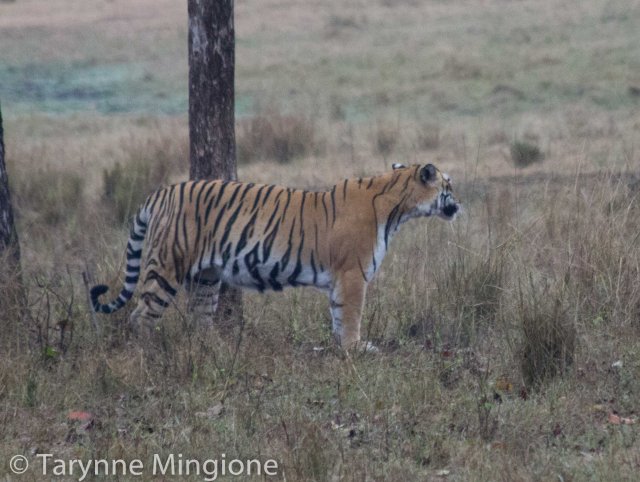

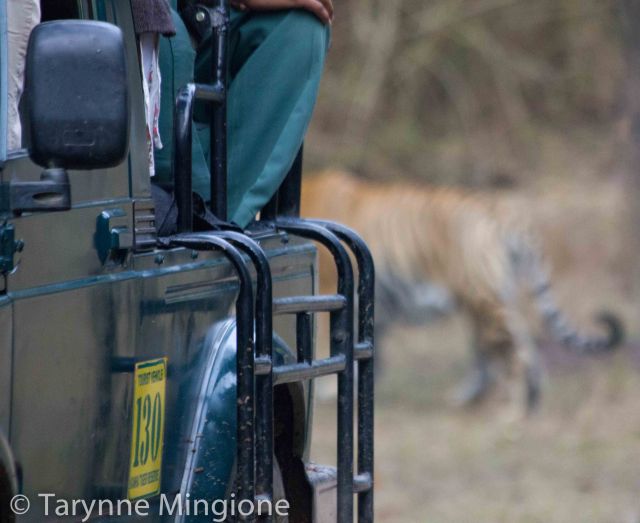
The overnight train followed by six hours of sitting on a bus had actually been worth it. We had defied the odds and seen an elusive tiger in only two safaris.
After sitting under the tree the tiger finally stood up walked around for a few minutes before walking right toward us and crossing the road only a few meters away.
It was the encounter we had hoped for and made spending the extra money on a second safari completely worth it.
We didn’t see another tiger during the rest of the safari, but having already seen the star attraction, we were able to much better enjoy the gorgeous landscape and dramatically colored birds.
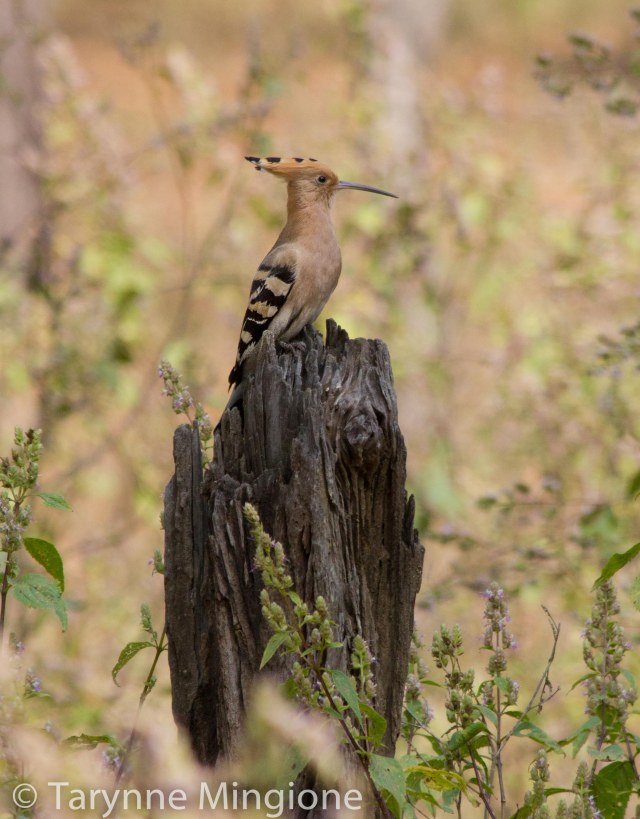
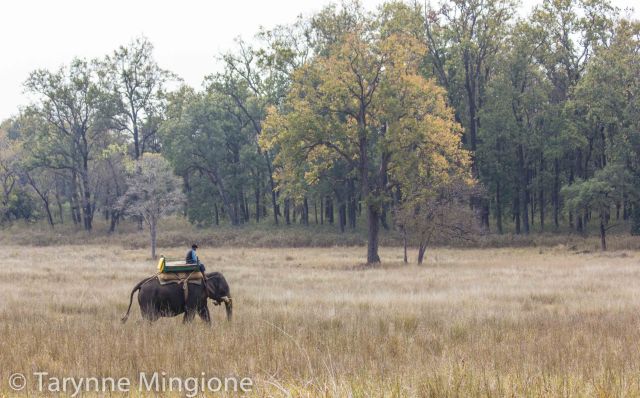
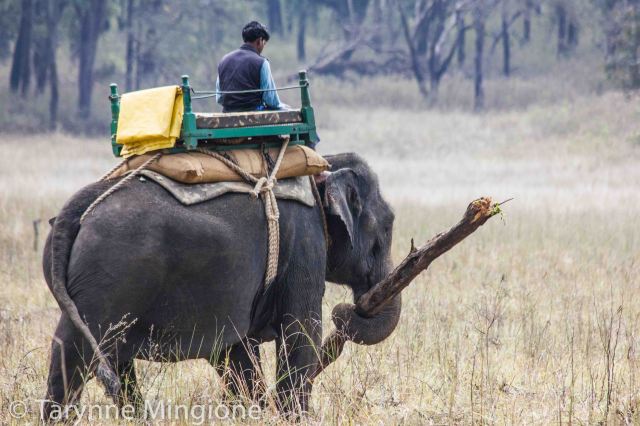
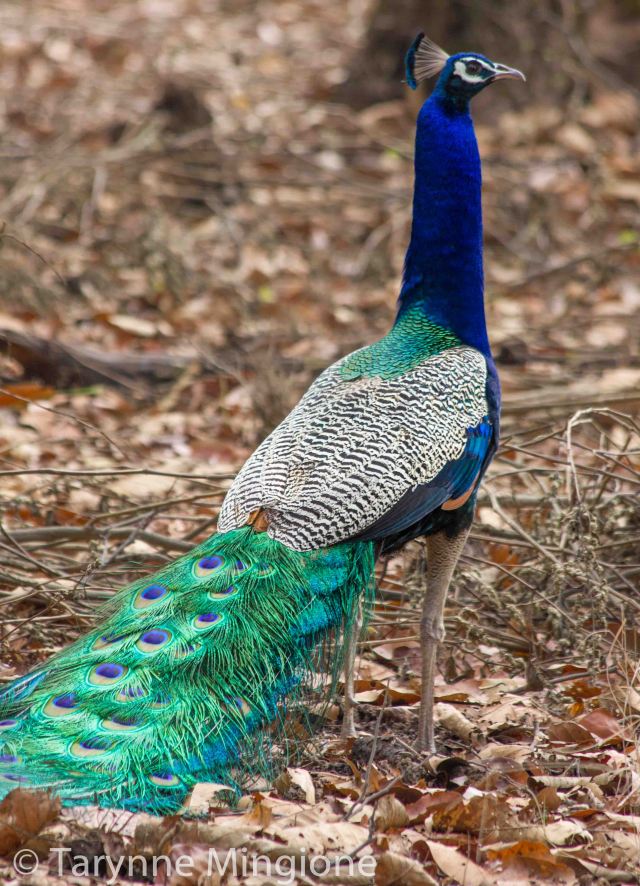
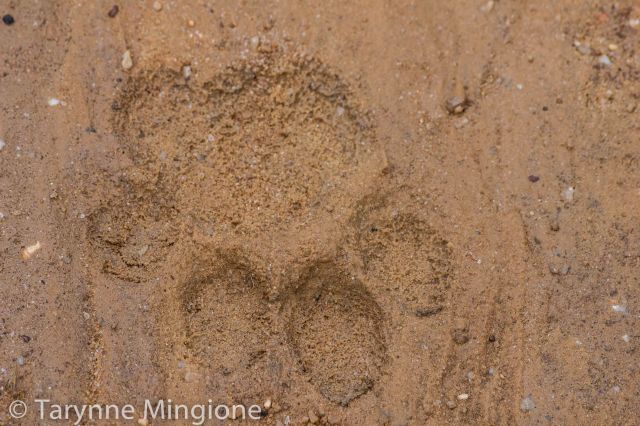
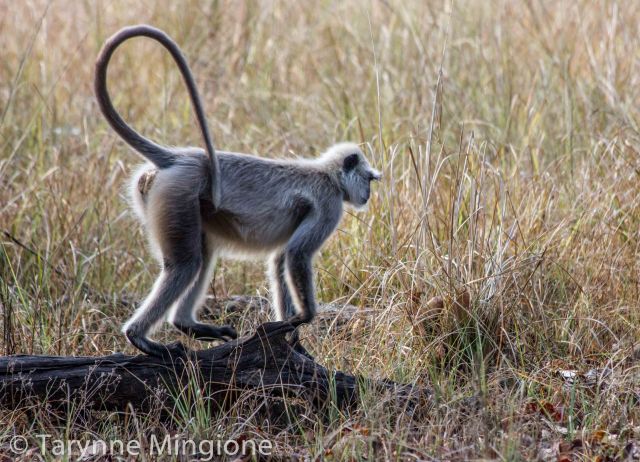
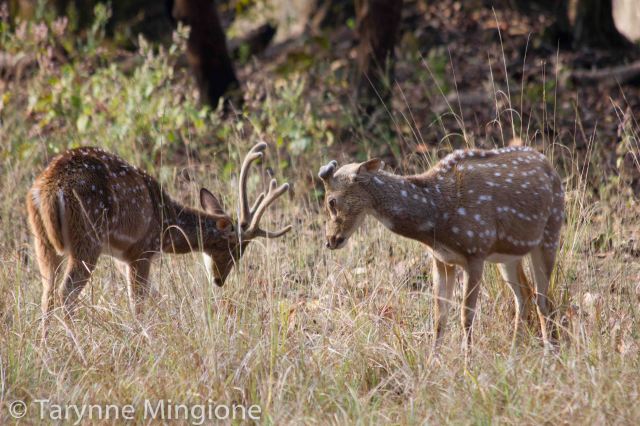
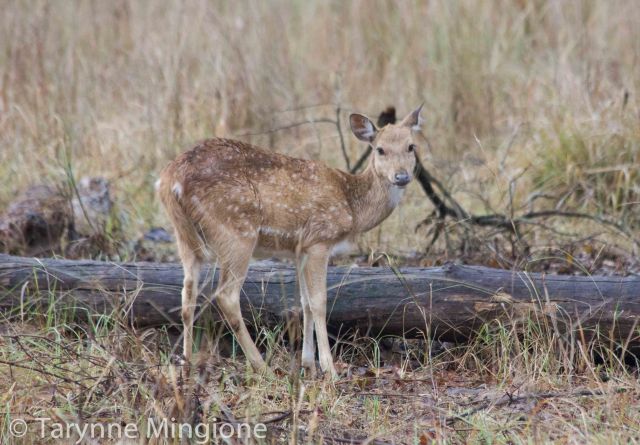
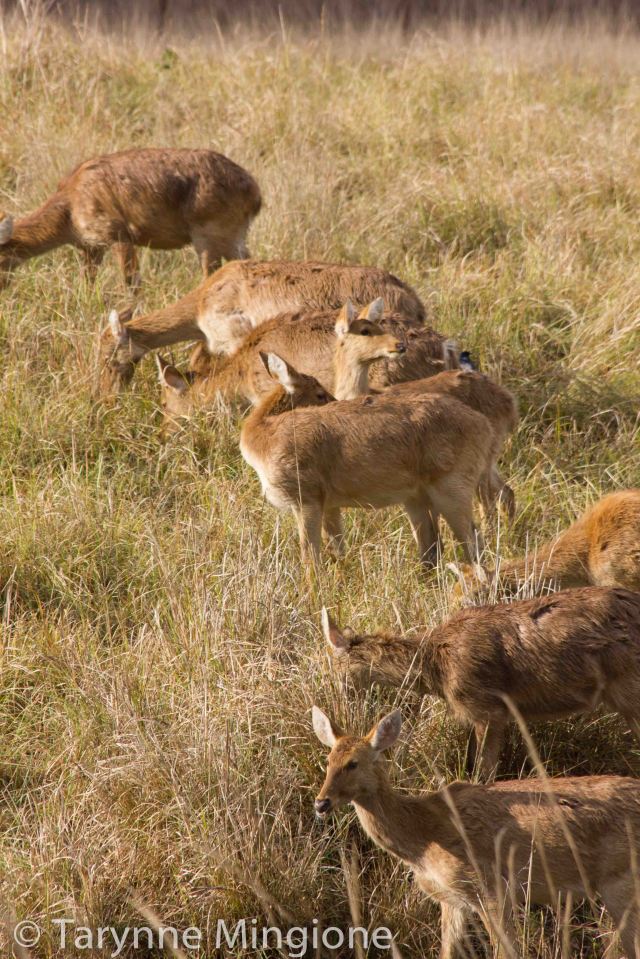
Due to the tiger sighting our safari arrived back at the gate about thirty minutes later than the day before. It was 11:30 a.m. by the time we made it back to Motel Chandan and we only had an hour and 15 minutes before we had to get on the bus back to Jabalpur to catch our night train to Varanasi.
Although we had already managed to see a tiger, the suspense for the day was not over. Our 2AC train tickets to Varanasi were currently wait listed at three and four, which meant we didn’t have confirmed tickets. Our tickets would only be confirmed if four people canceled their tickets and we moved up the list to fill their spots.
Despite the uncertainty we had to get on the six hour bus back to Jabalpur and hope that when we arrived at the train station our tickets would be confirmed.
Tanveer and Kelly also had wait listed tickets for the same train, but in 3AC class, so they were essentially in the same boat.
Once again the bus was packed and Hindi music blared through the speakers overhead. About 45 minutes outside Jabalpur we hit another thunderstorm and as the rain poured down it leaked through the window and all over Tarynne’s lap.
Thankfully when the bus arrived in Jabalpur the rain had stopped and we were able to walk to the train station without our backpacks getting wet.
When we arrived the four of us were greeted with mixed news. Tarynne’s ticket had moved up to confirmed, but mine was still wait listed. To make matters worse, Tanveer and Kelly were both still wait listed.
After a quick chat with the lady behind the ticket counter we learned that we were both allowed to board the train even though only Tarynne’s ticket had been confirmed. Worst case scenario we would have to share a bed on the train and best case scenario, the conductor would find me an empty bed.
Unfortunately, Tanveer and Kelly weren’t so lucky. They didn’t get seats and had to buy last minute general tickets that landed them in the sleeper class car for the night. Needless to say, they didn’t sleep for a second.
Meanwhile back up in 2AC I had gotten extremely lucky and within five minutes of boarding the train the conductor had found me a bed only a few berths down from Tarynne.
Exhausted from the early morning safaris, with our bags securely locked underneath our beds and our electronic devices cradled in our arms we quickly fell asleep to the rhythmic rocking of the train.